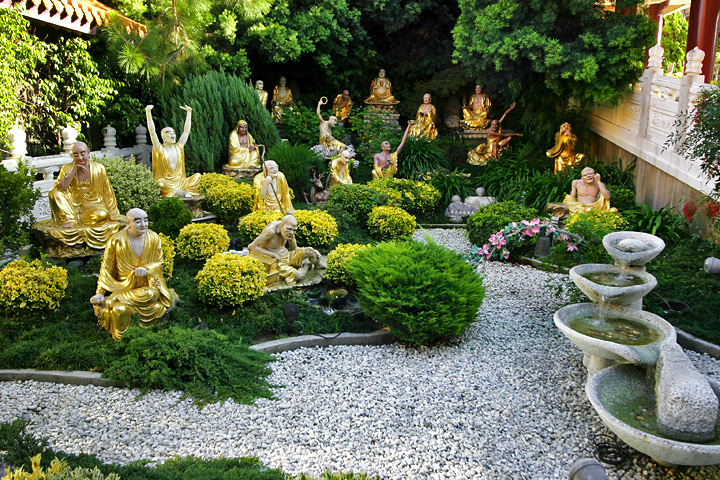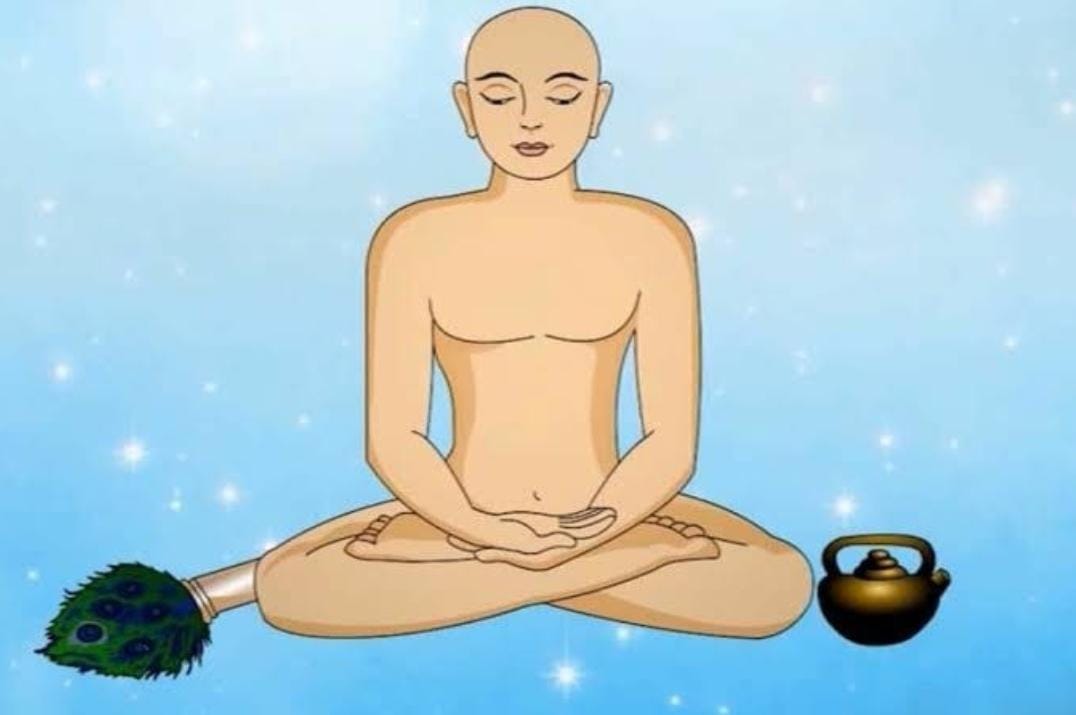|
Jivanmukti
A ''jivan mukta'' or ''mukta'' is someone who, in the Advaita Vedanta philosophy of Hinduism, has gained and assimilated self-knowledge, thus is liberated with an inner sense of freedom while living. The state is the aim of moksha in Advaita Vedanta, Yoga and other schools of Hinduism, and it is referred to as ''jivanmukti'' (Self-realization).Gerhard Oberhammer (1994), La D√©livrance d√®s cette vie: Jivanmukti, Coll√®ge de France, Publications de l'Institut de Civilisation Indienne. S√©rie in-8¬į, Fasc. 61, √Čdition-Diffusion de Boccard (Paris), , pages 1-9 Jivanmukti contrasts with the concept of '' videhamukti''; the latter means "liberation or emancipation after death, in afterlife". Etymology ''Jńęvanmukta'' () is an adjective derived from a combination of Sanskrit noun ŗ§úŗ•Äŗ§Ķ '' jńęva'', "life", and the past participle of the verb ŗ§ģŗ•Āŗ§öŗ•ć (much, or IAST muc), "to liberate". Monier-Williams gives the meaning "emancipated while still alive". ''Jńęvanmukti'' (), the ... [...More Info...] [...Related Items...] OR: [Wikipedia] [Google] [Baidu] |
Moksha
''Moksha'' (; , '), also called ''vimoksha'', ''vimukti'', and ''mukti'', is a term in Jainism, Buddhism, Hinduism, and Sikhism for various forms of emancipation, liberation, '' nirvana'', or release. In its soteriological and eschatological senses, it refers to freedom from '' saŠĻÉsńĀra'', the cycle of death and rebirth. In its epistemological and psychological senses, ''moksha'' is freedom from ignorance: self-realization, self-actualization and self-knowledge. In Hindu traditions, ''moksha'' is a central concept and the utmost aim of human life; the other three aims are ''dharma'' (virtuous, proper, moral life), '' artha'' (material prosperity, income security, means of life), and '' kama'' (pleasure, sensuality, emotional fulfillment). Together, these four concepts are called PuruŠĻ£ńĀrtha in Hinduism. In some schools of Indian religions, ''moksha'' is considered equivalent to and used interchangeably with other terms such as ''vimoksha'', ''vimukti'', '' kaivalya'' ... [...More Info...] [...Related Items...] OR: [Wikipedia] [Google] [Baidu] |
SaŠĻÉsńĀra
''SaŠĻÉsńĀra'' (Devanagari: ŗ§łŗ§āŗ§łŗ§ĺŗ§į) is a Sanskrit word that means "wandering" as well as "world," wherein the term connotes "cyclic change" or, less formally, "running around in circles." ''SaŠĻÉsńĀra'' is referred to with terms or phrases such as transmigration/reincarnation, karmic cycle, or Punarjanman, and "cycle of aimless drifting, wandering or mundane existence". When related to the theory of karma, it is the cycle of death and rebirth. The "cyclicity of all life, matter, and existence" is a fundamental belief of most Indian religions. The concept of ''saŠĻÉsńĀra'' has roots in the post-Vedic literature; the theory is not discussed in the Vedas themselves. It appears in developed form, but without mechanistic details, in the early Upanishads. The full exposition of the ''saŠĻÉsńĀra'' doctrine is found in early Buddhism and Jainism, as well as in various schools of Hindu philosophy. The ''saŠĻÉsńĀra'' doctrine is tied to the karma theory of Hinduism, and th ... [...More Info...] [...Related Items...] OR: [Wikipedia] [Google] [Baidu] |
Noumenal
In philosophy, a noumenon (, ; from ; : noumena) is knowledge posited as an object that exists independently of human sense. The term ''noumenon'' is generally used in contrast with, or in relation to, the term ''phenomenon'', which refers to any object of the senses. Immanuel Kant first developed the notion of the noumenon as part of his transcendental idealism, suggesting that while we know the noumenal world to exist because human sensibility is merely receptive, it is not itself sensible and must therefore remain otherwise unknowable to us. In Kantian philosophy, the noumenon is often associated with the unknowable "thing-in-itself" (). However, the nature of the relationship between the two is not made explicit in Kant's work, and remains a subject of debate among Kant scholars as a result. Etymology The Greek word (plural ) is the neuter middle-passive present participle of , which in turn originates from the word , an Attic contracted form of . A rough equivalent in ... [...More Info...] [...Related Items...] OR: [Wikipedia] [Google] [Baidu] |
Brahman
In Hinduism, ''Brahman'' (; IAST: ''Brahman'') connotes the highest universal principle, the ultimate reality of the universe.P. T. Raju (2006), ''Idealistic Thought of India'', Routledge, , page 426 and Conclusion chapter part XII In the Vedic Upanishads, ''Brahman'' constitutes the fundamental reality that transcends the duality of existence and non-existence. It serves as the absolute ground from which time, space, and natural law emerge. It represents an unchanging, eternal principle that exists beyond all boundaries and constraints. Because it transcends all limitation, ''Brahman'' ultimately defies complete description or categorization through language. In major schools of Hindu philosophy, it is the non-physical, efficient, formal and final cause of all that exists.For dualism school of Hinduism, see: Francis X. Clooney (2010), ''Hindu God, Christian God: How Reason Helps Break Down the Boundaries between Religions'', Oxford University Press, , pages 51‚Äď58, 11 ... [...More Info...] [...Related Items...] OR: [Wikipedia] [Google] [Baidu] |
ńÄtman (Hinduism)
''ńÄtman'' (; ) is a Sanskrit word for the true or eternal Self or the self-existent essence or an impersonal (''it'') witness-consciousness within each individual. Atman is conceptually different from JńęvńĀtman, which persists across multiple bodies and lifetimes. Some schools of Indian philosophy regard the ''ńÄtman'' as distinct from the material or mortal ego ('' Ahankara''), the emotional aspect of the mind ('' Citta''), and existence in an embodied form ('' PrakŠĻõti''). The term is often translated as soul, but is better translated as "Self", as it solely refers to pure consciousness or witness-consciousness, beyond identification with phenomena. In order to attain moksha (liberation), a human being must acquire self-knowledge ('' Atma Gyaan or Brahmajnana''). ''ńÄtman'' is a central concept in the various schools of Indian philosophy, which have different views on the relation between ''Atman'', individual Self ('' JńęvńĀtman''), supreme Self ('' ParamńĀtmńĀ'') a ... [...More Info...] [...Related Items...] OR: [Wikipedia] [Google] [Baidu] |
Arihant (Jainism)
''Arihant'' (, ) is a jiva (soul) who has conquered inner passions such as attachment, anger, pride and greed. Having destroyed four inimical karmas, they realize pure self. ''Arihants'' are also called ''kevalins'' ( omniscient beings) as they possess '' kevala jnana'' (pure infinite knowledge). An ''arihant'' is also called a ''jina'' ("victor"). At the end of their life, ''arihants'' destroy remaining '' karmas'' and attain ''moksha'' (liberation) and become '' siddhas''. ''Arihantas'' have a body while ''siddhas'' are bodiless pure spirit. The ŠĻÜamŇćkńĀra mantra, the fundamental prayer dedicated to '' Pa√Īca-ParameŠĻ£ŠĻ≠hi'' (five supreme beings), begins with ''ŠĻÜamŇć arihantńĀŠĻáaŠĻĀ'', "obeisance to the arihants". ''Kevalins'' - omniscient beings - are said to be of two kinds # ''Tirthankara kevalńę'': 24 human spiritual guides who after attaining omniscience teach the path to salvation. # ''SńĀmńĀnya kevalńę'': ''Kevalins'' who are concerned with their own liber ... [...More Info...] [...Related Items...] OR: [Wikipedia] [Google] [Baidu] |
Arhat
In Buddhism, an ''Arhat'' () or ''Arahant'' (, ūĎÄÖūĎÄ≠ūĎÄ≥ūĎĶūĎĀÜūĎÄĘūĎĀÜ) is one who has gained insight into the true nature of existence and has achieved ''Nirvana (Buddhism), Nirvana'' and has been liberated from the Rebirth (Buddhism), endless cycle of rebirth. The understanding of the concept has changed over the centuries, and varies between different schools of Buddhism and different regions. A range of views on the attainment of arhats existed in the early Buddhist schools. The Sarvastivada, SarvńĀstivńĀda, KńĀŇõyapńęya, MahńĀsńĀŠĻÉghika, EkavyńĀvahńĀrika, LokottaravńĀda, BahuŇõrutńęya, Praj√ĪaptivńĀda, and Caitika schools all regarded arhats as imperfect in their attainments compared to buddhahood, buddhas.Sree Padma. Barber, Anthony W. ''Buddhism in the Krishna River Valley of Andhra''. 2008. p. 44Warder, A.K. ''Indian Buddhism''. 2000. p. 277 Mahayana Buddhist teachings urge followers to take up the path of a bodhisattva, and to not fall back to the level of ... [...More Info...] [...Related Items...] OR: [Wikipedia] [Google] [Baidu] |
ŇöramaŠĻáa
A ''ŇõramaŠĻáa''; ; ; ; ) is a person "who labours, toils, or exerts themselves for some higher or religious purpose" or "seeker, or ascetic, one who performs acts of austerity".Monier Monier-Williams, ŗ§∂ŗ•ćŗ§įŗ§ģŗ§£ ŇõramaŠĻáa, Sanskrit-English Dictionary, Oxford University Press, p. 1096 The ŇõramaŠĻáa tradition includes primarily Jainism, Buddhism, and others such as the ńÄjńęvika. The ŇõramaŠĻáa religions became popular in the circles of mendicants from greater Magadha that led to the development of spiritual practices, as well as the popular concepts in all major Indian religions such as ''saŠĻÉsńĀra'' (the cycle of birth and death) and ''moksha'' (liberation from that cycle).Flood, Gavin. Olivelle, Patrick. 2003. ''The Blackwell Companion to Hinduism.'' Malden: Blackwell. pp. 273‚Äď274. The ŇöramaŠĻáic traditions have a diverse range of beliefs, ranging from accepting or denying the concept of Soul, fatalism to free will, idealization of extreme asceticism to that of f ... [...More Info...] [...Related Items...] OR: [Wikipedia] [Google] [Baidu] |




